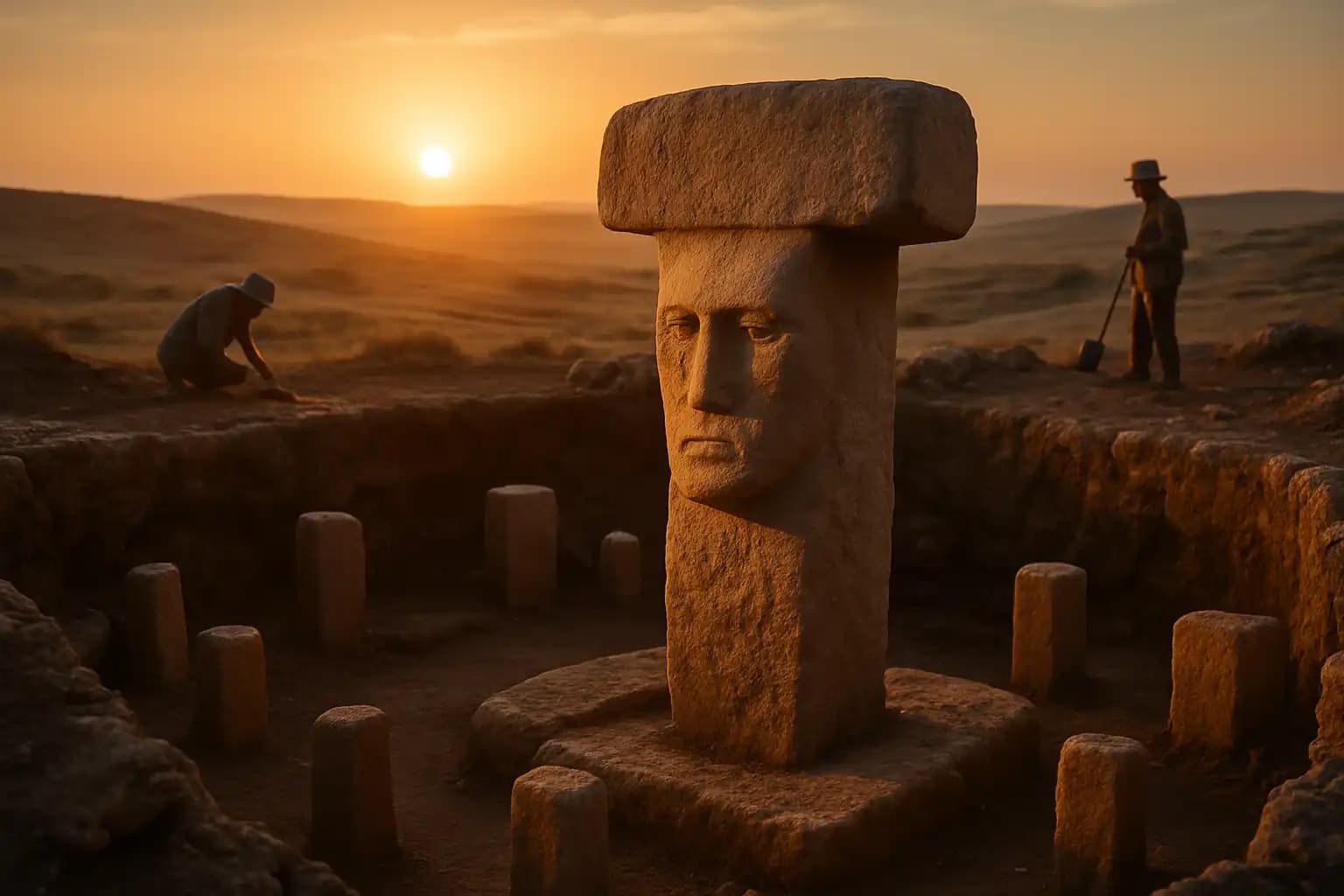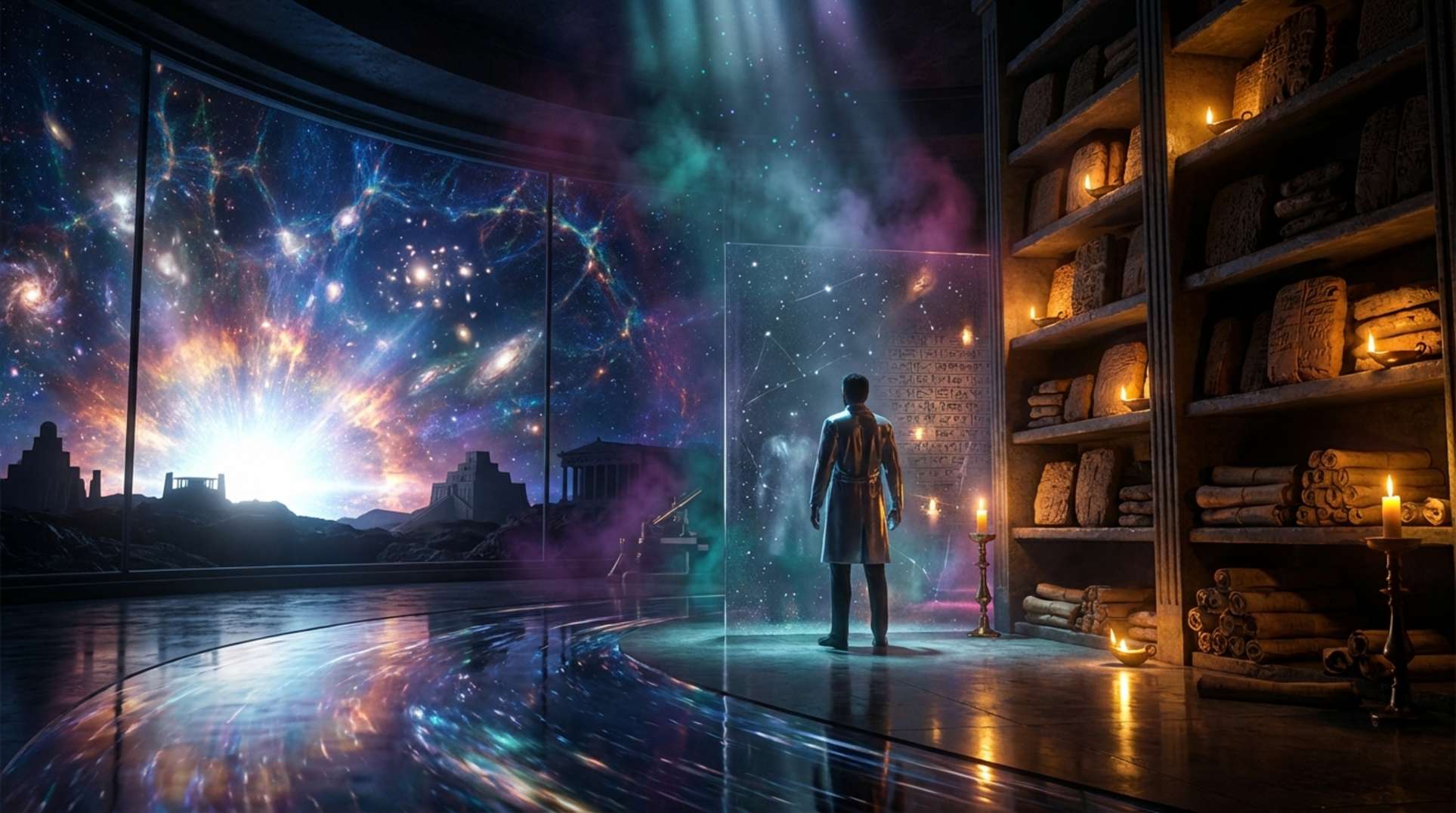In the barren wilderness of southeastern Turkey, ancient stones are rewriting the origins of civilization. Karahan Tepe, older than Stonehenge and adjacent to the famed Göbekli Tepe, has stunned archaeologists with a unique find: a T-shaped pillar carved with a human face—possibly the oldest such depiction ever discovered. This is just the tip of the Neolithic iceberg. Recent digs have revealed a mini-pillars shrine, 3D reliefs, and a trove of artifacts still hidden from the public. These breakthroughs are reshaping our understanding of the distant past.
The Human-Faced Pillar: A New Icon of the Stone Hills
In October 2025, archaeologists unveiled a T-shaped pillar bearing a human face at Karahan Tepe. According to The Art Newspaper, the face features deep-set eyes, a prominent nose, and an angular jaw, carved onto a 135 cm stone that predates the wheel by millennia. Archaeologist Necmi Karul explains that it is the first anthropomorphic example at any Taş Tepeler site, signaling a major cognitive leap: the transition from abstract symbolism to direct representation. This breakthrough echoes the symbolic advancement documented at Göbekli Tepe, whose famous T-pillars feature stylized arms but never faces (Karahan Tepe overview).
The face pillar testifies to this culture’s advanced vision of identity, spirituality, and artistry. Such finds are central to rethinking how early societies crafted their beliefs, as explored in this analysis of ritual and protection in ancient and modern worlds.
Mysterious Mini Pillars Shrine and Ritual Architecture
Archaeologists haven’t stopped at the famous face. A shrine layered with multiple small, phallic-shaped pillars has emerged—a unique and puzzling ritual chamber. As reported by Ancient Origins, this chamber, carved directly from bedrock and presided over by a serpentine stone figure, suggests prescribed ritual practices involving fertility or celestial symbolism. Some pillars appear arranged to align with astronomical events, while others may have played a role in seasonal ceremonies. Field researchers note that only 5% of the vast Karahan Tepe complex is excavated—a reflection of large-scale mysteries, similar to those in archival field reports on unexplained ancient monuments.
The function of these shrines remains debated. Their intricacy rivals elite creations elsewhere in the ancient world, revealing an astonishingly advanced social structure long before metal or written language.
Unpublished Carvings and Enclosures: New Statues, New Questions
Not all breakthroughs are ready for the public eye. The latest excavation season yielded anthropomorphic statues over two meters tall, new vulture sculptures, and ornate stone plates—many under embargo pending formal publication. A comprehensive press update from the Ministry of Culture highlighted these unprecedented findings. According to project insiders, the main enclosure’s twin pillars reach 4.8 meters and may have supported roof structures or ritual platforms. New winter solstice alignments, rare pigments, and large-scale animal reliefs hint at sophisticated astronomical knowledge and social organization.
These revelations connect to broader patterns of Neolithic monumentality and creative ambition—including technology and cosmology explored in investigative features like this field report on engineering breakthroughs and cutting-edge scanning of ancient sites. Karahan Tepe’s secrets are far from exhausted.
Why It Matters: Rewriting the Origins of Civilization
Karahan Tepe’s discoveries disrupt old narratives about civilization’s dawn. These intricate carvings—from the expressive face pillar to the enigmatic animal sculptures—prove that complex religion, community, and symbolic art existed centuries before agriculture. Evidence of advanced organization in 9400 BCE challenges the idea that settlements arose only after farming. Instead, it suggests that shared rituals and monumental architecture may have ignited stable societies. This mirrors social drivers behind today’s significant nation-building projects—and the anxieties that compel us to protect, venerate, and question our origins, as seen in deep analysis of cultural cycles and collapse.
What will researchers uncover next? Only a fraction of Karahan Tepe has been excavated, and more unpublished finds await. As archaeologists continue to dig, expect surprises at the intersection of culture, science, and collective memory. For evidence-driven coverage of ancient enigmas and modern mysteries, visit Unexplained.co—where history, science, and wonder coexist.




